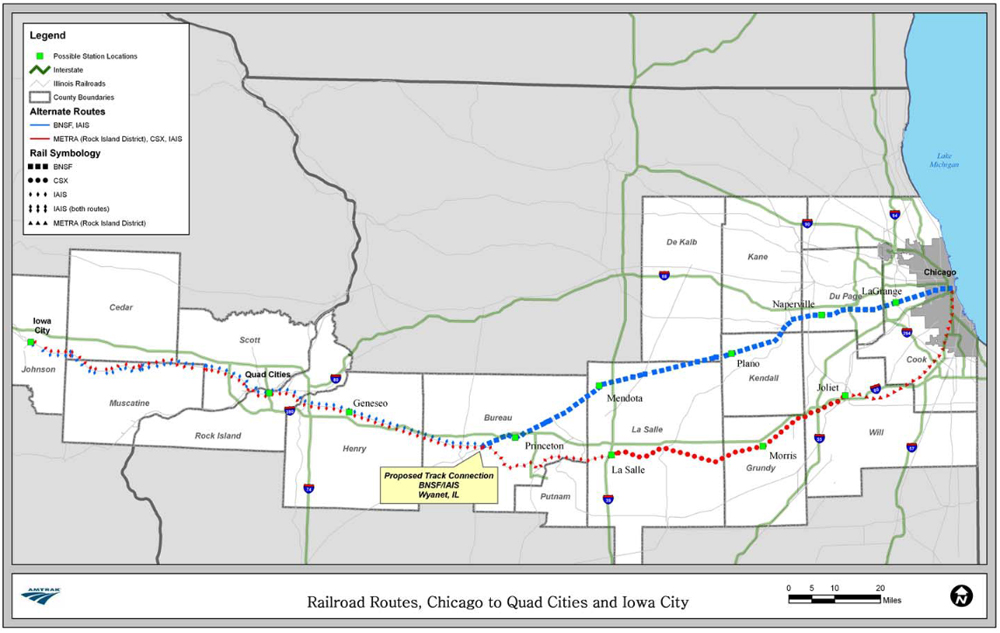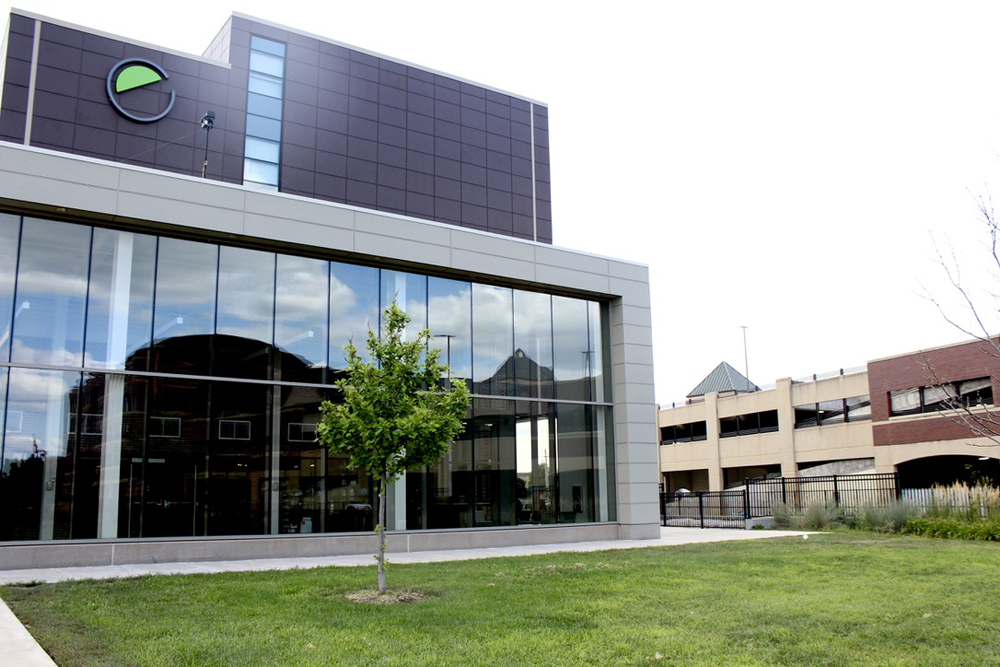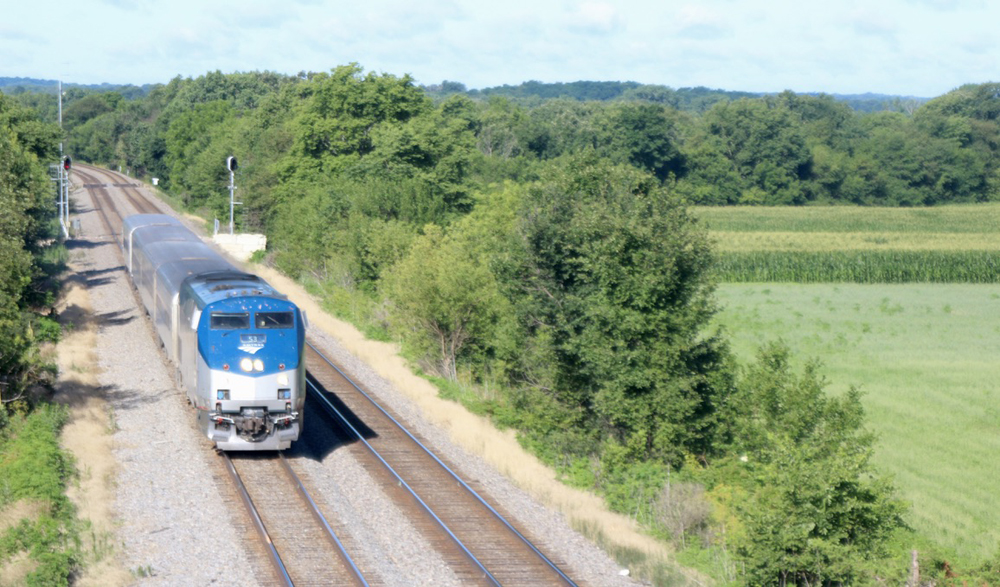Long Chicago-Quad Cities Amtrak service impasse illustrates hurdles for new routes: Analysis
MOLINE, Ill. — Among the 69 projects receiving Federal Railroad Administration Corridor Identification and Development Program grants last December was a familiar route: Chicago-Quad Cities.
Familiar because that route, in addition to being among the recipients of the $500,000 Corridor ID grant [see “Full list of passenger routes …,” Trains News Wire, Dec. 8, 2023], was touted in a January 2008 press release from the United Transportation Union’s Illinois legislative board director. The release highlighted the $23 million price to reestablish service to Moline and Rock Island, Ill., across the Mississippi River from Davenport and Bettendorf, Iowa.
Amtrak completed a route study in December, 2007. “The one-time investment in capital improvements and $6 million in operating support,” according to the release, would provide two daily round trips. The route would utilize 111 miles of BNSF’s already Amtrak-active former Chicago, Burlington & Quincy main line between Chicago and Wyanet, Ill., where a new connection would access 48 miles of regional Iowa Interstate’s ex-Rock Island rails into downtown Moline.
Most of the investment would restore signaling and upgrades to Iowa Interstate track that would allow 79-mph operation, and build a $6 million connection and interlocking west of Wyanet where the two routes are grade separated.
With the Chicago-Quad Cities figures in hand, the Iowa Department of Transportation sponsored an April 2008 study projecting a 58-mile extension to Iowa City. The report explored revenue and ridership impacts that varied depending on the amount of signal and track investment undertaken before positive train control became a requirement.

What happened? That UTU state legislative director, Joseph Szabo, became FRA Administrator in the Obama Administration under DOT Secretary Ray LaHood, a Republican from Peoria who served in the Illinois legislature and U.S. House of Representatives. With that political firepower, the Chicago-Iowa City route was awarded $177 million in 2011 from the American Recovery and Reinvestment Act.
Meanwhile, Illinois Gov. Pat Quinn pledged $78 million from the his “Illinois Jobs Now” program and Iowa Gov. Chet Culver’s administration planned to contribute $20.6 million. But both were replaced by Republican governors who halted their investments before talks with Iowa Interstate progressed, though capacity improvements at BNSF’s Eola Yard east of Aurora moved forward and were eventually completed.
Nevertheless, the city of Moline moved forward on building an intermodal facility to accommodate trains; it and the adjoining Element Hotel opened in 2018. Iowa never showed any continuing interest.

With Democrat J.B. Pritzker recapturing the Illinois governorship in 2019, an additional $225 million in state funding was allocated to completion of the project, but the $177 million federal grant, set to expire in 2020, received an extension to Dec. 31, 2024.
With that date looming, there is still no agreement between Iowa Interstate and IDOT on the amount and nature of improvements required to launch service, so it is unclear what the additional $500,000 of planning money can accomplish other than making it eligible for future investment.
Trains News Wire has periodically made inquiries of both parties with a list of specific questions regarding costs, investment, and compensation Iowa Interstate is requesting.
In a Feb. 27, 2024, email, Iowa Interstate President and CEO Joe Parsons says, “We do remain in contact with IDOT related to the proposed Quad Cities service. However, our agreement with IDOT prohibits us from discussing negotiations publicly.”
He had been sent responses from an IDOT email that stated:

— The scope and cost of Iowa Interstate improvements, including the Wyanet connection, were still being negotiated. “Once an agreement has been reached, we will be able to complete preliminary engineering on the connection.” In January 2014, an IDOT official who now works for Amtrak told Quad Cities Online that preliminary engineering “was almost complete.”
— The state agency told the Quad City Times in 2023 that improvements Iowa Interstate was demanding were “cost prohibitive,” but IDOT would only tell News Wire, “Negotiations between IDOT, IAIS, and the FRA are active and ongoing, and we are not able to comment further on the details. There is weekly contact among the parties.”
— No timeline for completion has been established pending an agreement with Iowa Interstate, but “by way of comparison, the Chicago-Rockford passenger rail project has construction starting in 2025 and service is anticipated to begin by the end of 2027,” IDOT says. Preliminary agreements between the agency, Union Pacific, and operator Metra for that service are already in place.
— Regarding the $177 million federal grant’s upcoming expiration, IDOT says, “We are working with the FRA to [further] extend the date and are hopeful we will be able to reach agreement.” A portion of ARRA funding designated for Chicago-Quad Cities was used for equipment procurement, and IDOT did not volunteer how much money remains.
Transparent information about costs and negotiation nitty-gritty has been stuck behind a shield of confidentiality for more than 15 years. The agency tells News Wire, “IDOT is not eligible to take the case to the Surface Transportation Board.” But even if Amtrak makes that attempt on behalf of the traveling public, ongoing travails from the delayed New Orleans-Mobile Gulf Coast startup aren’t encouraging.
There may be many good reasons why Iowa Interstate, IDOT, and the FRA can’t come to an agreement that has taken 16 years (so far) to reach. At this point, another $500,000 from the Corridor ID program won’t necessarily make that happen.
